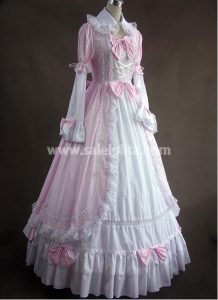The Renaissance, a vibrant period of intellectual and artistic revival, is renowned for its profound influence on the cultural fabric of Europe, a legacy that permeates various aspects of modern society. In this era of rebirth, color played a pivotal role, not just as an aesthetic choice, but as a carrier of symbolic messages. Among the palette used by artists and the fashion-conscious, pink held particular significance, its interpretation deeply embedded in the societal norms and philosophical contemplations of the time.
Pink, a color that might seem inconspicuous in the grand scheme of the Renaissance palette, was, in fact, a hue charged with meaning. Within the societal context of the period, pink was often associated with joy, liveliness, and a certain youthful energy, considered a reflection of health and vitality. The delicate balance between the passionate, intense red and the pure, stark white produced shades of pink, symbolizing a harmonious existence between two extremes.
This nuanced view of pink in the Renaissance era bears similarities with the symbolism imbued in the style of a prairie dress. Like the understated yet meaningful presence of pink, the prairie dress encompasses more than meets the eye. Initially designed for practicality and modesty, the prairie dress later evolved to represent a sense of nostalgia and a connection to traditional values, much as the color pink in Renaissance times echoed themes of vitality, youth, and a connective middle ground.

In the art world of the Renaissance, pink also took on religious connotations. It was frequently used in paintings depicting the Madonna and Child, suggesting innocence, purity, and the flesh of human beings, particularly that of the divine incarnation. The color adorned the robes of Christ and other sacred figures, a deliberate choice by artists to convey theological messages and depict these figures as relatable and human, yet divinely pure.
Beyond the spiritual, the color pink in Renaissance fashion was a statement of class and wealth. The dyeing process to achieve the perfect shade was intricate and costly. The individuals who donned garments in this hue were often of a higher social stratum, able to afford the luxury that these colors denoted. This aspect is reminiscent of the prairie dress's evolution, which, over time, has shifted from a simple, utilitarian garment to a fashion statement that signifies a conscious stylistic choice.
Interpreting the color pink from the Renaissance period requires an understanding that transcends the visual aspect, reaching into the societal, cultural, and even economic realms of the time. Its presence, subtle yet significant, reflects the complexities and contradictions of the era. In its quiet way, pink carries narratives of life, society, and artistic expression, similar to the multifaceted stories woven into the fabric of the prairie dress, making both the color and the garment part of a richer, deeper human story.